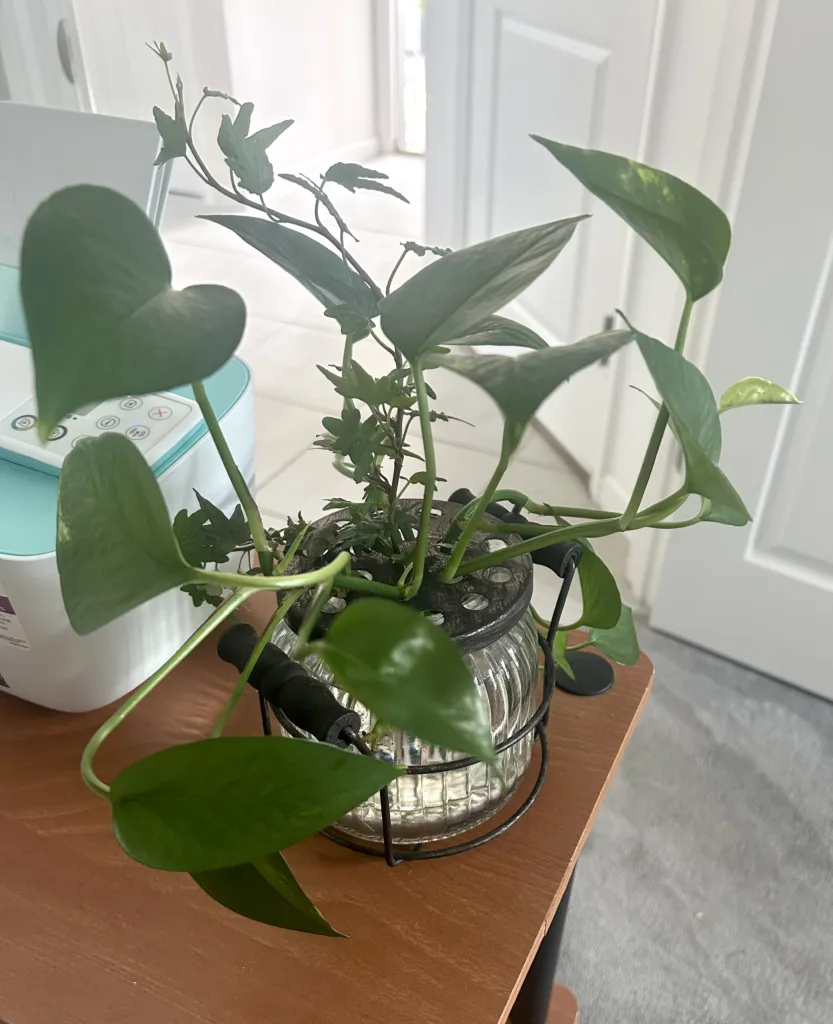As a gardener, there is nothing more refreshing than adding some greenery to your abode. And, if you are fond of exotic and gorgeous plants, then Glacier Pothos will surely pique your interest.
The Glacier Pothos, also known as Epipremnum pinnatum, is an attractive plant with stunning leaves that vary in color from cream to light green, to white. These popular indoor plants, native to the Philippines, are known for their ease of care and striking variegation. They are versatile plants that can thrive in different conditions and even purify indoor air, which makes them a must-have in your gardening collection. In this blog post we will delve into the nitty-gritty of how to grow and care for Glacier Pothos, including pot type, soil type, water and light requirements, fertilizer, and how to propagate.
Pot Type for Glacier Pothos
When it comes to potting Glacier Pothos, it is essential to choose a container that allows proper drainage. Opt for a pot that is at least one size larger than the plant’s root base, with several drainage holes. You can choose a ceramic, plastic, or terra-cotta pot, or, if you want to make a statement, then consider a decorative pot, which can highlight the plant’s foliage.
Best Soil Type
Choosing the right soil is crucial for Glacier Pothos’s health and growth. Avoid using heavy, dense soil that holds water, which can lead to root rot. Instead, use well-draining soil that is rich in organic matter, such as peat moss or coco coir. You can also add perlite or sand to the soil mixture to promote drainage and aeration, which helps with root development. I have written a blog post on best soil type for pothos along with repotting pothos, just click here to read.
Light Requirements
Glacier Pothos prefer bright and indirect light, although they can also tolerate low light, making them fantastic indoor plants. If you don’t have the perfect window or area in your home to receive the correct light you can always use and LED grow light.
Watering your Glacier Pothos
As for watering, it’s essential to keep the soil consistently moist, but not waterlogged. Overwatering can cause root rot, while under-watering can lead to wilting and yellowing of the plant’s leaves. It’s best to water your Glacier Pothos once a week, and make sure to let the soil dry out slightly before the next watering.
Growing Pothos in Water Alone
If you are looking for a low-maintenance option, then you can always grow your Glacier Pothos in water. It’s easy to care for, as all you have to do is keep the water level from dropping below the roots and change it every few weeks. I have a pothos in my office that grows solely in water. I found a unique vase with a metal frog lid to separate the stems and love the touch of green it adds to my desk!

Fertilizing your Pothos
Fertilizing your Glacier Pothos can help boost growth and keep it healthy. You can use a balanced, water-soluble fertilizer once a month during the growing season, which is typically from spring to fall. Avoid fertilizing in winter, as the plant’s growth rate slows down. Over-fertilizing can also lead to leaf burn, so be careful to follow the instructions on the fertilizer label.
Propagating your Glacier Pothos
Propagating Glacier Pothos is quite simple, making it an ideal option for gardeners looking to expand their plant collection. One way to propagate is to take stem cuttings, which should be at least five inches long and have two nodes. Remove the bottom leaves from the stem, and place it in water in a propagation station until roots form or moist soil until roots form. Another method is to layer the plant, which involves burying the stem of the plant into the soil while it is still attached to the parent plant.
Happy Gardening!
In conclusion, growing and caring for Glacier Pothos is not rocket science. All they require is some tender love and care, and they will reward you with their striking foliage and purifying qualities. Remember to choose a well-draining pot, use well-draining soil, keep the plant in bright, indirect light, water it regularly, fertilize it appropriately, and propagate it whenever you feel like expanding your gardening horizon.
Please be sure to check out my Gardening Blog Post Page for more tips on all types of gardening. Including Seed Saving, Seed Starting, Orchids, Water Gardening, Coldframe Gardening, Indoor Bulb Gardening, Hydroponics, Container Gardening, Mums, Herbs, African Violets, planting Bulbs, Flower Gardening, Vegetable and Fruit Gardening, Indoor Houseplants of all kinds, Cactus, Succulents, Hanging plants, Deer resistant plants and even Bird, Bee, Butterfly and Hummingbird Gardens!
